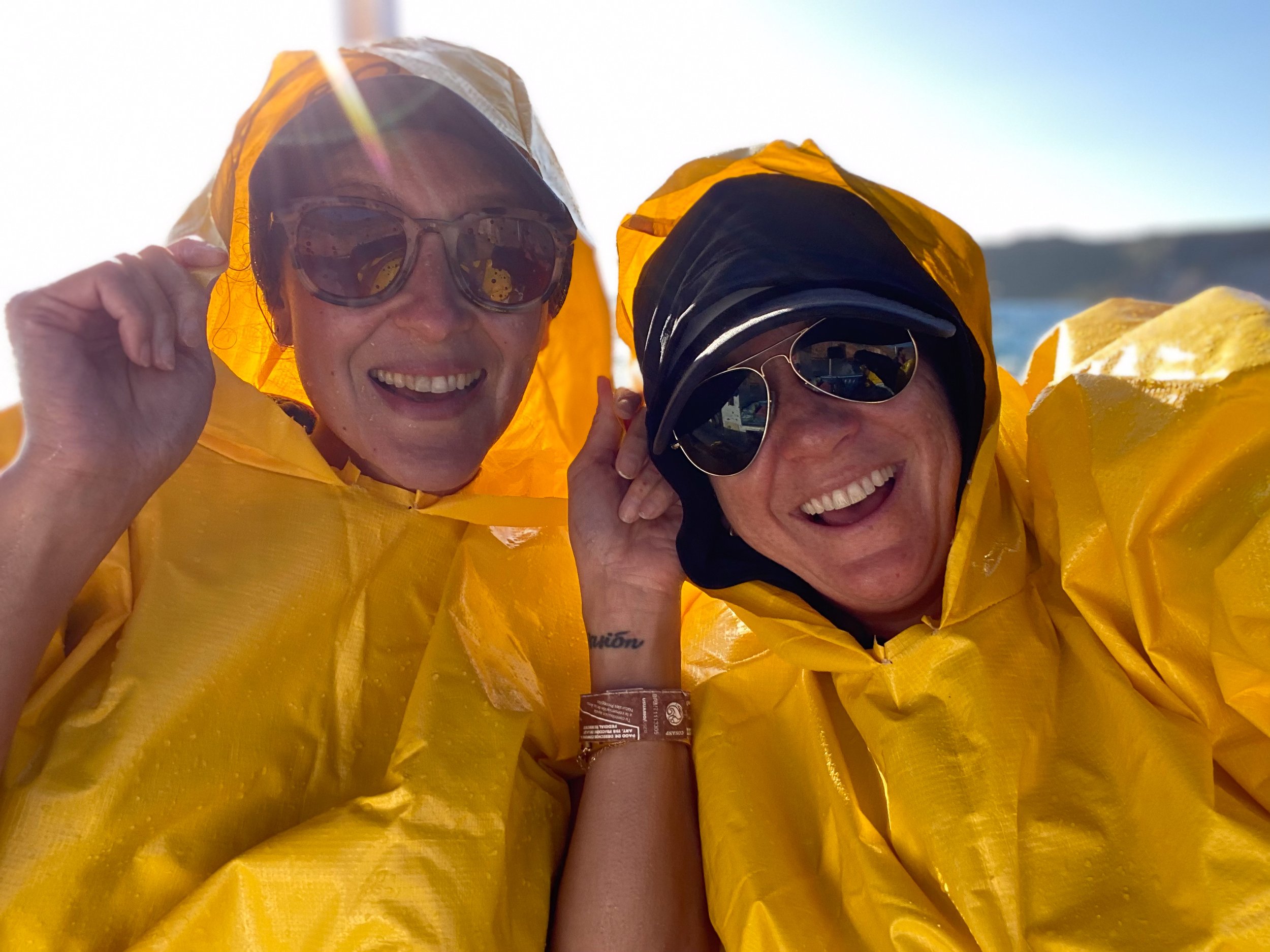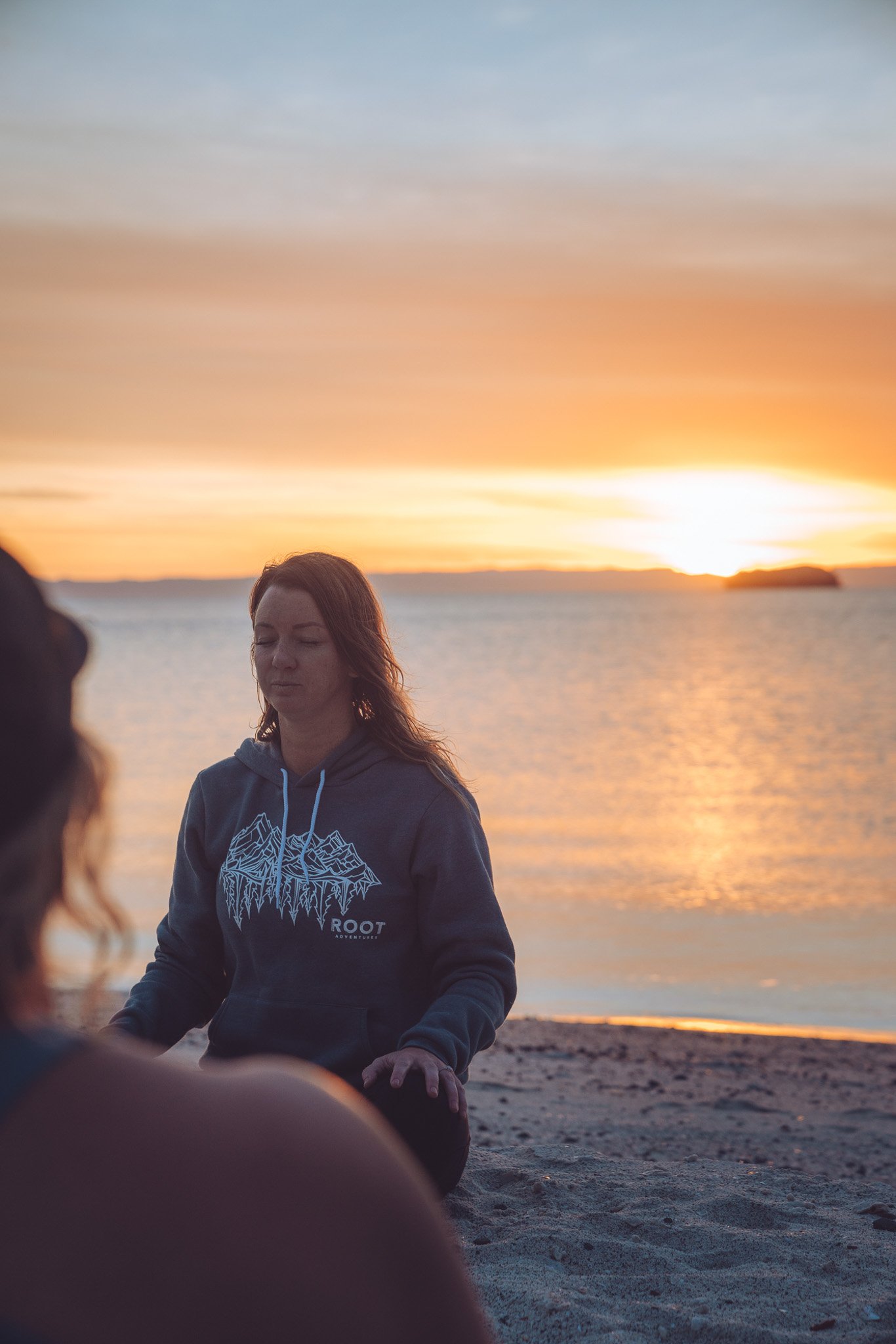The Galapagos Travel Guide
Everything you need to know about traveling to the Galapagos!
You’re about to partake in an incredible adventure through one of the most bio-diverse areas in the world! While you explore the great outdoors both on land and in the sea, you’ll also be exploring the great indoors, aka “the self”, with mindfulness practices and opportunities for reflection.
To get the most out of your journey it’s best to be prepared! We’ve laid out everything you need to know about traveling to the Galapagos with us. We can’t wait!
The Weather
How should I dress?
The weather in the Galapagos couldn’t be more beautiful this time of year! Think warm weather, warm clothes, bathing suits, and sun hats!
The average temperature in February is 80 degrees Fahrenheit with lows in the 70’s and highs in the 80’s. Although February is considered to be in the wet season, the moments of rain are brief and quickly followed by sun. However, we definitely recommend packing some rain gear!
You can find more details on gear below.
packing list
What do I need to bring?
The Galapagos Islands are as diverse as the wildlife you’ll find on them! Some islands will have palm trees and sandy beaches while others will have a more dessert landscape with lava and rocks. So you’ll want to pack for a bit of everything. Also keeping in mind that it is wet season, you’ll want some light rain gear!
Your adventure is full of water activities as well as opportunities for hiking.
All gear that is needed for your water activities will be provided for you, however if you have your own snorkeling mask that you just can’t travel without, feel free to bring it!
You can find a detailed packing list here. We will also go over this packing list in much more detail on our two pre-trip calls.
Sustainability is one of our core-pillars, so we love to suggest sourcing gear from friends/family or second hand stores that sell lightly used gear! If you’re buying gear new, we recommend shopping locally or from small companies in whose mission you believe.
Preparing For Your adventure
what difficulty level should i expect?
This adventure is a beautiful blend of activity and leisure. Expect to move your body, but also have plenty of time to rest, relax and soak up the sun!
Throughout the trip you will have the opportunity to snorkel, paddleboard, kayak, and swim. There are multiple boat rides as well. Most activities are optional and are very well supported should anyone require rest! On our trips we encourage you to do what feels right. This might mean participating in all the activities offered or sitting out, resting, relaxing and reflecting. Make this trip truly yours.
We classify this adventure as a level 2 out of 5. This means that this trip is accessible for all levels and requires little to no preparation for physical activities planned. There are of course some day hikes on the itinerary as well as water activities mentioned above. For these reasons you must be physically mobile (i.e. able to get in and out of a boat, etc).
Most activities are likely to be flexible and optional and you will have a support team of local guides as well as Root Tour Leaders to help you along the way!
Do as the locals do
A Crash course in the local culture of the galapagos
It’s important at Root that when we travel we travel with an open mind and are respectful to the local ways, traditions, and customs. Keeping in mind that we are ambassadors of the US when we travel to foreign countries, it can be helpful to be prepared with some basic knowledge!
Language: Predominately Spanish (although due to the rise in tourism locals speak English as well)
Currency: All of Ecuador operates in U.S. dollars
Cuisine: Seafood! Galapagos is in the heart of one of the most abundant marine ecosystems on the planet, hence the flavorful mix of fish and shellfish including shrimp, oysters, lobster, squid, and octopus. Sides frequently include a variation of plantains or yucca, locally grown vegetables and a soup, accompanied by freshly squeezed juices, cocktails, or locally grown organic coffee.
Most Popular Dishes
+Ceviche is perhaps the most famous of the Galapagos dishes, which is one or more types of fish or seafood covered with thinly sliced tomatoes, onions and with enough lime juice to fill a bowl. Eaten with a spoon, like a cold soup.
+Viche is a soup with a creamy peanut base with chopped vegetables and a white fish like corvina (sea bass), tilapia, or halibut.
+Arroz marinero, or seafood rice is a favorite among travelers and locals alike.
+Typical Ecuadorian chicken, beef, and pork, dishes most raised locally on ranches in the Galapagos
Some Fun Facts:
+The Galápagos Islands sit exactly on the equator, meaning the sun rises at six and sets at six every day, all year.
+There are 18 major islands in total, three of which are inhabited by permanent residents.
+The largest Galápagos island is the seahorse-shaped Isabela.
+The city with the largest population is Puerto Ayora of Santa Cruz Island.
+The islands represent significance in all elements.
a. Land: They sit at the meeting of two massive tectonic plates, the Nazca plate and the Cocos plate.
b. Water: They rest at the culmination of five major ocean currents, namely the Humboldt Current, the Panama Current, the Cromwell Current, the South Equatorial Current, and the Peru Oceanic Current. Ocean currents are a common topic of casual conversation on the islands, especially the Humboldt, as the cool water it brings from Antarctica affects swimming, fishing, and tourism.
c. Fire: The islands are volcanic. The nine active volcanoes on the islands have erupted 24 times between 1961 and 2011.
d. Air: Some believe the islands are also a meeting point for various energies, making the spot spiritually significant. Many locals call the Galápagos Las Islas Encantadas, “The Enchanted Islands.”
– From the novel Equator
Being respectful to the locals also means respecting the wildlife. The animals in the islands are used to be surrounded by people, but that doesn’t mean they don’t get scared if you try to play with them. It’s really important that you keep, at least, two meters away just to let them preserve their space. See below for more wildlife etiquette!
Wildlife
get your binoculars out!
February is one of the most active months for breeding for the indigenous species of birds. So get ready for some bird sightings!
Also, expect to see sea lions sleeping on benches and a host of other wildlife living close to humans. While they aren’t afraid of humans, it is important to be respectful and keep your space.
Some other animals you will most likely see:
+Giant Tortoises
+Frigatebirds
+Marine Iguanas
+Sally Lightfoot Crabs
+Blue-Footed Boobies
+Bottlenose Dolphins
+Galapagos Hawks
+Galapagos Flamingos
Take only pictures, Leave only footprints.
As we explore deeper into the Galapagos it’s important to remember that we are guests of a sensitive ecosystem. Below are a few guidelines that might be helpful as you travel!
+ Maintain a distance of at least six feet (two meters) from wildlife to avoid disturbing them, even if they approach you.
+ Never feed wildlife, as this can cause health problems. It is your responsibility not to introduce food, animals, or plants into the Archipelago.
+Keep the flash off when taking photos of wildlife!
+Leave it where you found it! Do not take or buy any products or souvenirs made from banned substances like black coral, shells, lava rock, animal parts, or any native wood or vegetation.
+Practice “leave-no-trace” principles in order to maintain the beauty of the environment. Stay on trail and watch your step! Even the tiniest plant or flower took time and effort to grow.
Mindfulness
What if I’ve never meditated?
Have no fear! No prior meditation or mindfulness experience needed.
Nature is the ultimate teacher. Just getting out into the great outdoors has been proven to be incredibly beneficial for your mental and physical health.
Your Root Tour Leaders will provide you with simple and practical ways to keep your connection with nature, yourself, and your fellow travelers at the forefront of your experience.
But don’t worry, this won’t be a serious or quiet trip. At Root we see mindfulness as a way to participate in the ALIVENESS of life.
There will be moments you’ll be encouraged to observe silence, listen to nature, reflect on your internal experience or even possibly journal and share. And there will be many moments of raucous laughter, joyous storytelling, and playing in the dirt. Our trips have a little bit of everything!
To help you get the most out of your experience you will receive a pre-trip guide that has mindfulness and meditation practices, potential journaling prompts, and thoughtful ways to connect with nature throughout your adventure.
Final Tips
Anything else I need to know?
We’d love to impart some final words of wisdom for you here. These are tips and tricks we’ve learned over the years exploring, trekking, and guiding groups.
Pack light! The lighter the better. We cannot stress this enough! When packing ask yourself this question: “Do I absolutely need this?” If the answer is no, leave it behind.
A word about luggage. If possible, pack so that you can bring everything in a carry-on. That way if your luggage gets lost (knock on wood) you won’t be trying to piece gear together or purchase lots of expensive items last minute. If you do decide to check luggage then we recommend wearing or packingsome essentials in your carry-on just in case!








